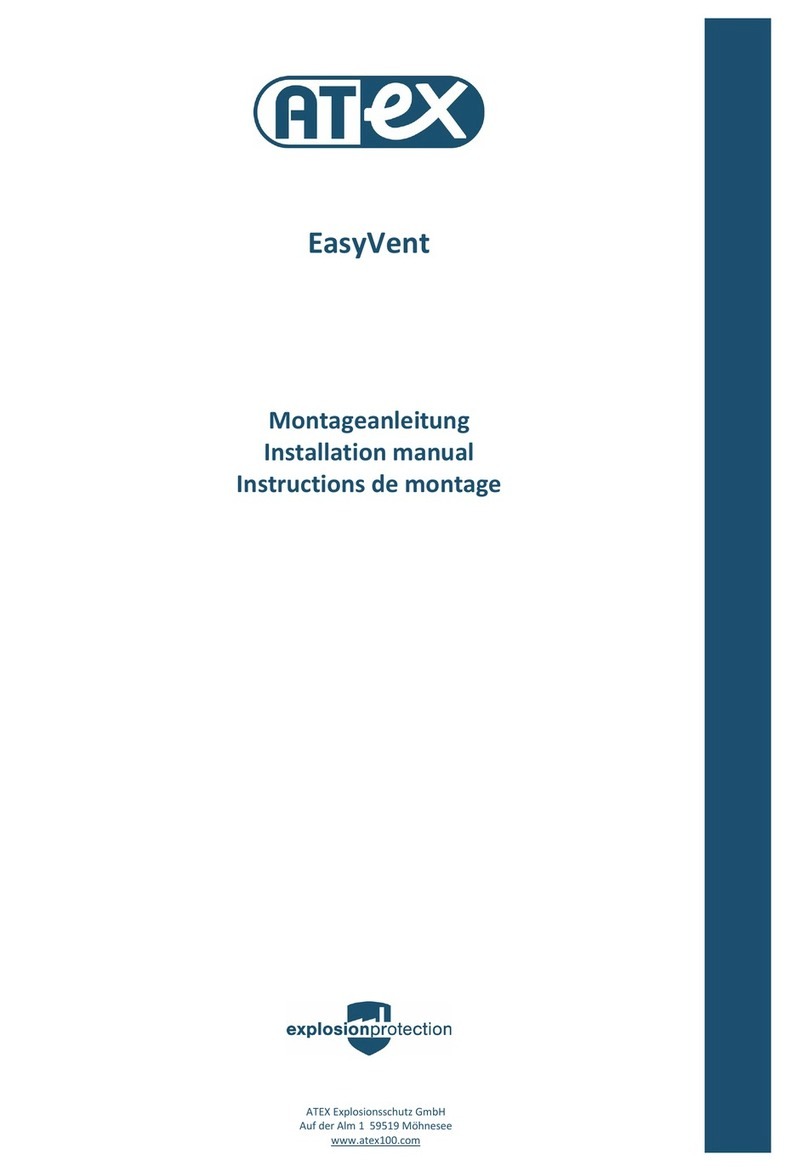1.5.
STORAGE
Prior to the installation to the protected technology, the product must be stored in a clean and dry place,
and it must not be exposed to the weather. The product shall be stored in the original packaging. Under
no circumstances can the product be exposed to rain, freeze, dust or any other weather conditions that
affect the functions of the FLEX device. FLEX device store at temperatures from 10 °C to 40 °C.
The user manual must be kept throughout the life of the product and it must be readily accessible to all
employees. If the product is removed from service or sold, it must be handed over tothenew user together
with these user manual. In the event of the loss of these instructions, they can be re-ordered from the
manufacturer.
1.6.
TERMS AND DEFINITIONS
The flameless
explosion venting
device –FLEX
The equipment for
explosionventing
consists of the equipment for explosion venting (membrane) and
the devicefor the absorption of the released energy (FLEX), which
spreads during the dust explosion in a confined space. FLEX
prevents the transmission of the explosion pressure and flame
through the release opening of the membrane,thereby protecting
people and equipment in its vicinity. FLEX must be usedin the
event of the membrane installation inside the building, where the
protected equipment is located.
(membrane) - is the device protecting a vessel or other closed
volumes using the explosion venting –releasing the explosion
pressure to the surroundingspace. The membrane prevents the
explosion pressure inside the vesselor any other closed volumes
from exceeding the structural strength of the vessel and reduces
the explosion pressure to a lower value than the allowablepressure
load-capacity of the vessel.
Opening signalling device
is a device monitoring the position of the membrane
(closing/opening). It works on the principle of breaking the wire
firmly connected with the membrane and passed through a cable
entry in the FLEX body. Upon breaking, the safety circuit is
interrupted and the membrane opening is indicated.
Authorized representative
person authorized by the manufacturer (RSBP) to act as
authorized person.
Trained person
person who has thoroughly familiarized with this manual.
Operational log
document provided on request by RSBP to its products or other
appropriate document of the operator. In the case of using a
different document than supplied by RSBP spol. s r.o. this
document must contain the following information on each
operation on the device FLEX:
•
date and time of the operation
•
what caused the operation (regular service, malfunction …)
•
how the action was solved
•
name and signature of the worker who performed the
operation.




























